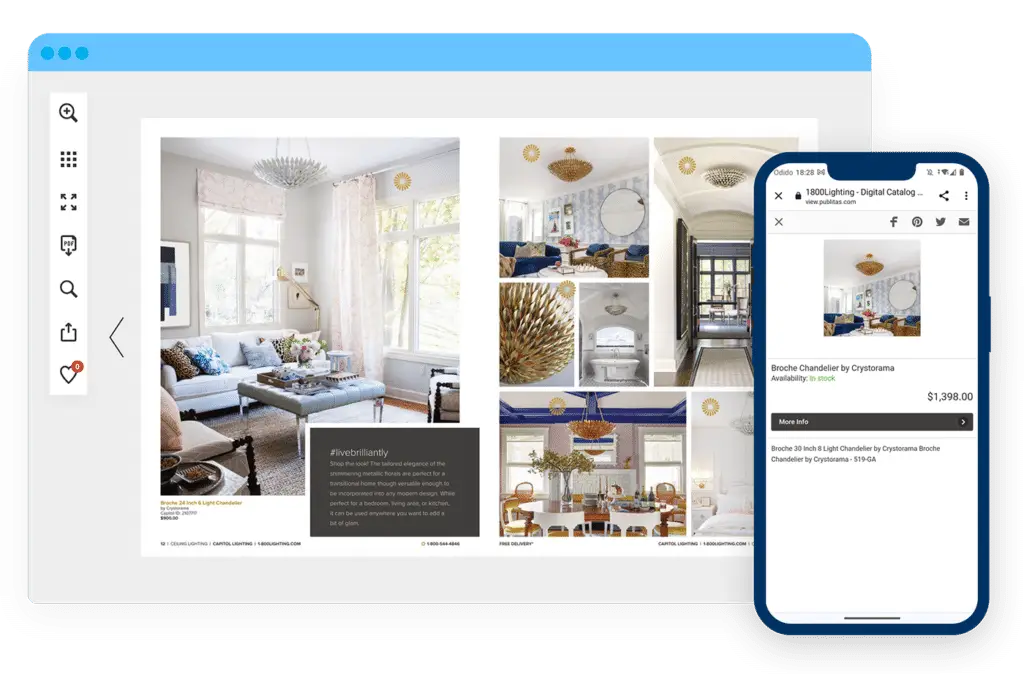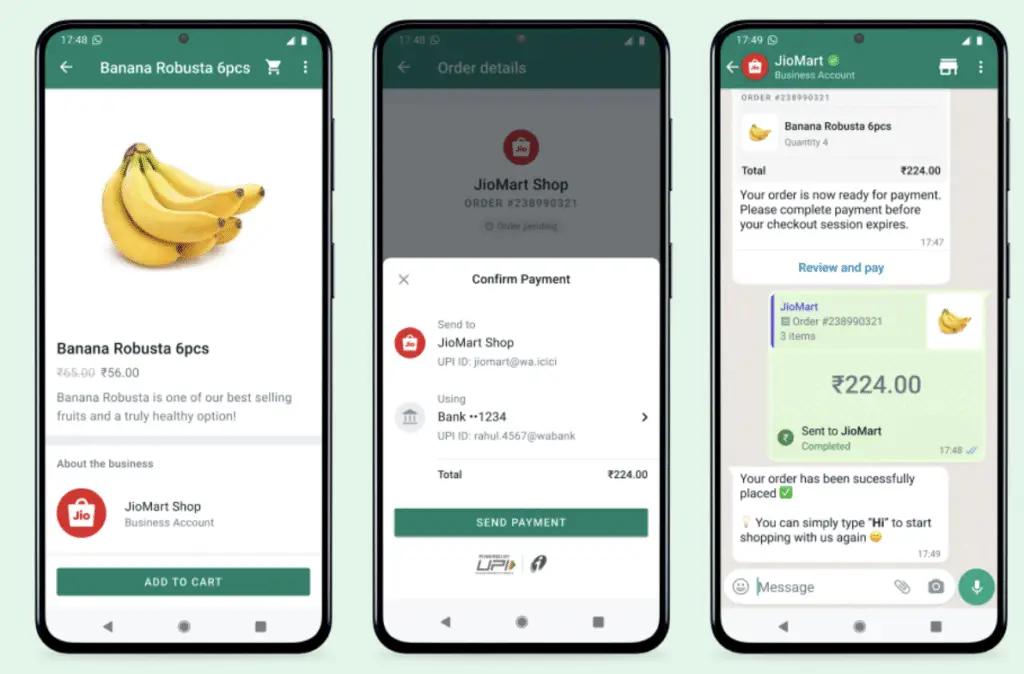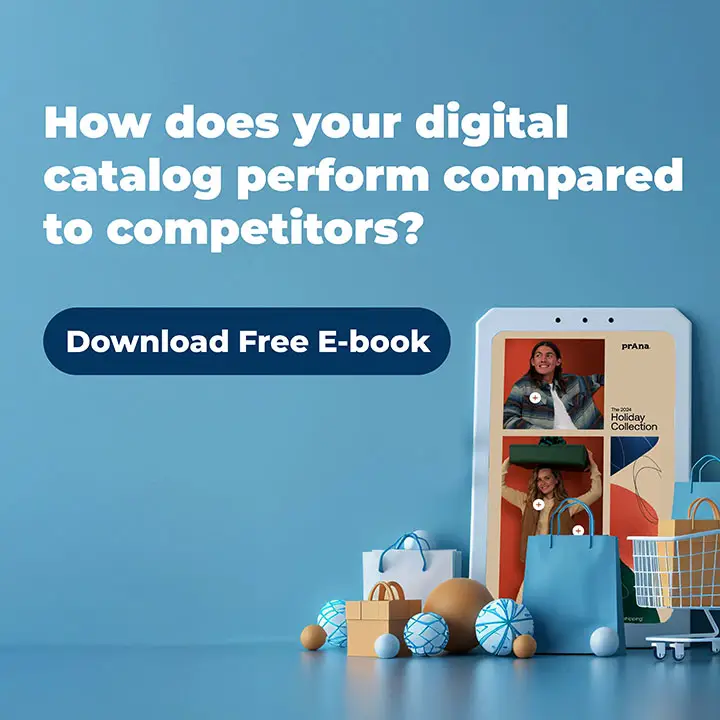Paper flyers might still show up in your mailbox, but today’s forward-thinking supermarkets aren’t banking on them to drive revenue. They’re doing something much more effective: using digital catalogs to reach shoppers with relevant deals at exactly the right time and place.
These aren’t just pretty PDFs. They’re dynamic, interactive, personalised, and data-driven. They’re integrated with apps, loyalty cards, and even platforms like WhatsApp. When used well, digital catalogs unlock new revenue streams, increase basket sizes, and turn browsers into buyers.

Personalised Offers That Convert
Digital catalogs allow supermarkets to tailor offers to each customer’s needs. Using first-party data, often collected through club cards, retailers can serve relevant promotions based on purchase history, location, and life stage.
New parents might see baby essentials. A customer who recently moved might be shown cleaning products and household basics. Someone with a plant-based diet could receive recipe bundles featuring meat-free ingredients.
This level of relevance increases action. When the right product is in front of the right person at the right time, the likelihood of purchase rises. Over time, this leads to more frequent shopping, higher spend per visit, and stronger customer retention.
Real-Time Promotions and Stock Updates
Printed flyers are finalised weeks in advance and can’t be updated once distributed. Digital catalogs, on the other hand, offer real-time flexibility. Retailers can adjust prices, change layouts, remove out-of-stock items, and highlight trending products instantly.
If the temperature spikes, supermarkets can promote cold drinks and ice cream. If a particular product is flying off the shelves, it can be featured more prominently. If a deal underperforms, it can be replaced without delay.
This responsiveness improves both the customer experience and the retailer’s ability to sell what matters most in that moment.
Bigger Baskets and Higher AOV Through Product Discovery
Digital catalogs encourage discovery, helping shoppers add more to their baskets without even realizing it. Layouts built around themes, recipes, or product bundles guide customers from one item to the next, increasing order value.
Take Capitol Lighting as an example. After adding a digital catalog to their marketing strategy, the US-based home decor brand saw a 22% increase in (AOV) average order value among catalog viewers compared to standard website traffic. Presenting products in styled rooms with helpful design tips inspired customers to buy more, not just browse.
Supermarkets can use the same approach. A pasta promo becomes a full meal suggestion. A back-to-school layout leads to lunchboxes, snacks, and stationery. It’s a simple but powerful way to boost AOV while improving the customer experience.

Digital Catalogs Connect Supermarkets with Customers on WhatsApp
Retailers are no longer waiting for shoppers to find the catalog. They deliver it directly to them on platforms they already use, like WhatsApp. This approach is especially powerful in regions where WhatsApp is the primary communication tool.
Customers can opt in to receive weekly catalog links, time-sensitive deals, and personalised offers directly through the app. The catalog opens seamlessly in chat, allowing customers to browse and shop without downloading anything or visiting a website.
This strategy becomes even more effective when combined with Clubcard data. Offers can be tailored based on customer behaviour, shopping habits, and preferred store location. This kind of direct, relevant engagement keeps customers coming back.

Geo-Targeted Content for Local Relevance
Digital catalogs make localisation simple. Supermarkets can customise content for specific regions, stores, or even individual customers, helping ensure that the catalog reflects local tastes, stock levels, pricing, and events.
For example, stores near coastal areas might promote seafood, while those near schools could highlight lunchbox specials or back-to-school bundles. By showing customers what’s available nearby, retailers avoid frustration and build trust.
Local relevance leads to higher engagement and better conversion rates.
Smarter Spend with Performance Analytics
One of the most significant advantages of digital catalogs is the ability to measure performance. Marketers can track how long users browse, what they click, where they stop scrolling, and which products drive the most action.
This data helps marketing teams fine-tune layouts, improve content, and focus on high-performing promotions. It also helps identify gaps, like underperforming sections or product categories.
Instead of guessing what works, retailers can test and optimise. Over time, this results in more efficient campaigns, better return on investment, and smarter decision-making.

Digital Catalogs Lead to Lower Costs, Higher Impact
Producing and distributing printed catalogs has high costs and limited flexibility. By shifting to digital, retailers can significantly reduce these expenses and redirect budgets toward channels that offer greater return on investment, such as paid media, loyalty programs, or personalised promotions.
For some, a hybrid approach works best. They keep a limited print presence in-store while focusing on digital as the primary format. This allows supermarkets to meet customers across multiple touchpoints, whether shopping online, browsing on mobile, or visiting a physical location.
The move to digital also supports broader sustainability goals while improving operational efficiency. It’s a smarter, more scalable way to stay relevant in a fast-changing retail environment.
From Static Flyers to Revenue Drivers
Digital catalogs are no longer just a modern version of a paper flyer. They’re a performance engine, powered by data, personalisation, and seamless user experience. Supermarkets using them strategically drive more revenue while reducing waste and deepening customer relationships.
If your catalog isn’t delivering measurable impact, now’s the time to rethink your strategy.
Ready to see what a modern digital catalog can do? Start by integrating it with your loyalty program, exploring WhatsApp distribution, and using performance data to optimise every click.


